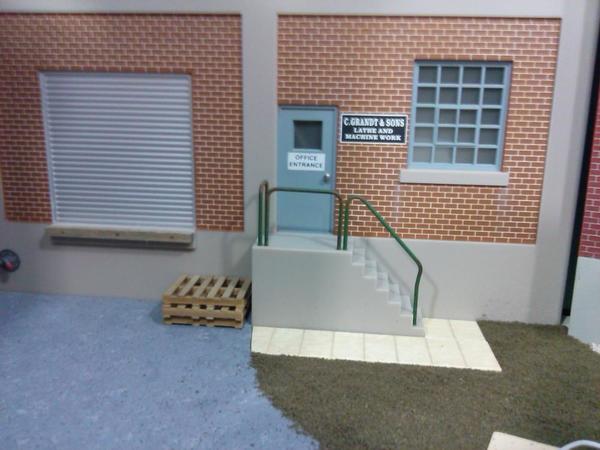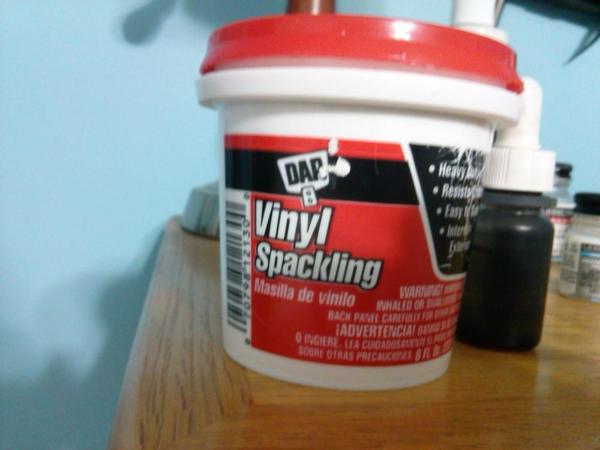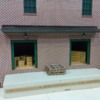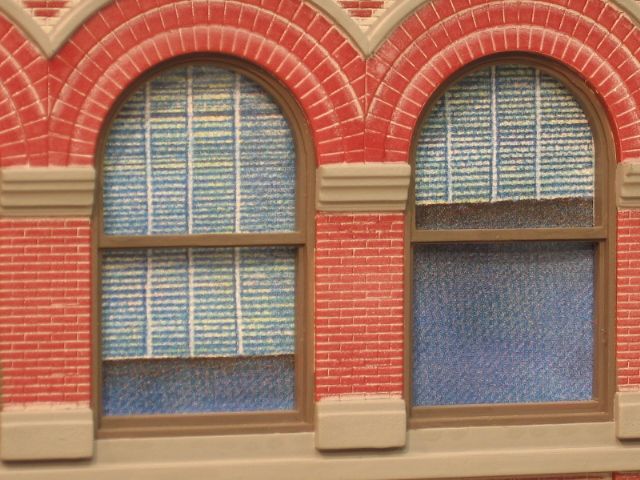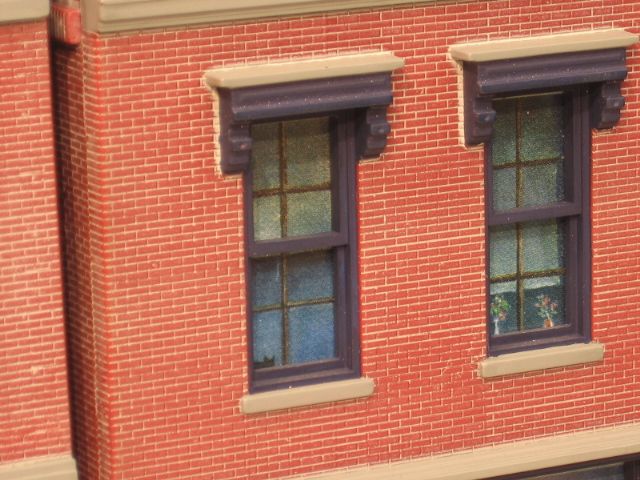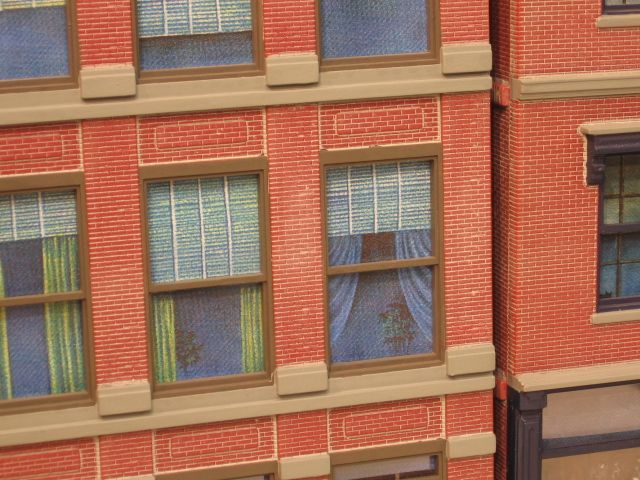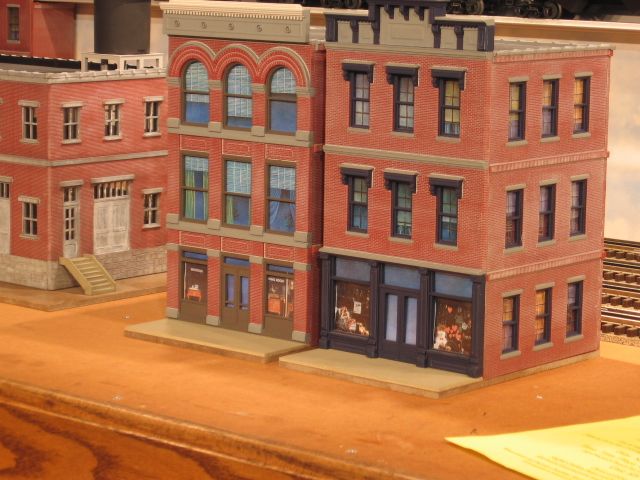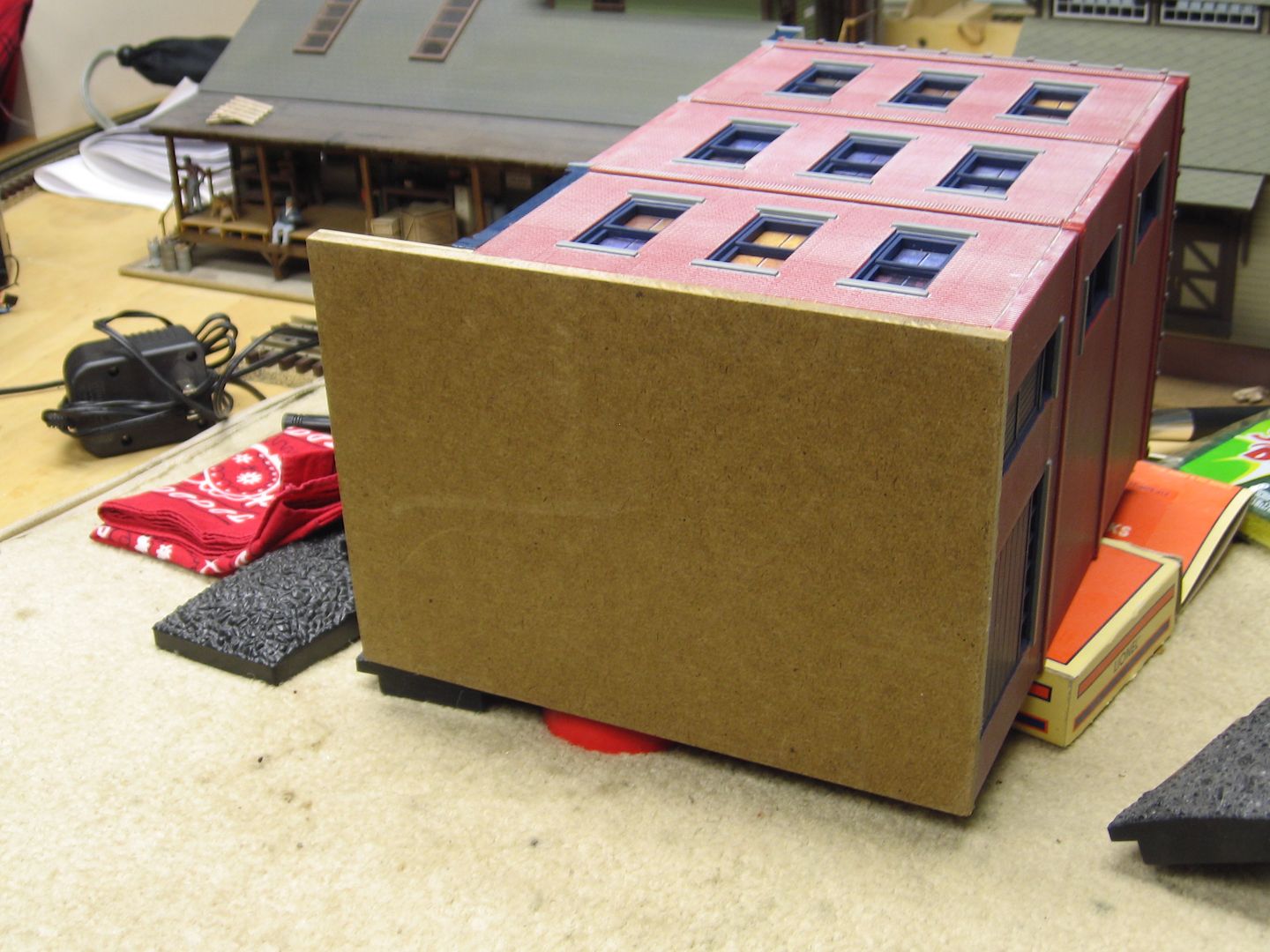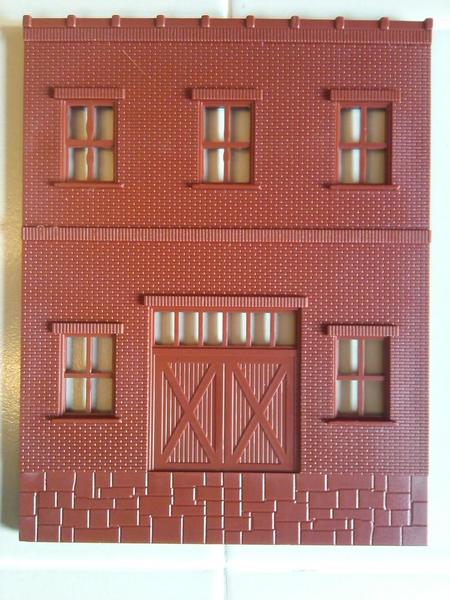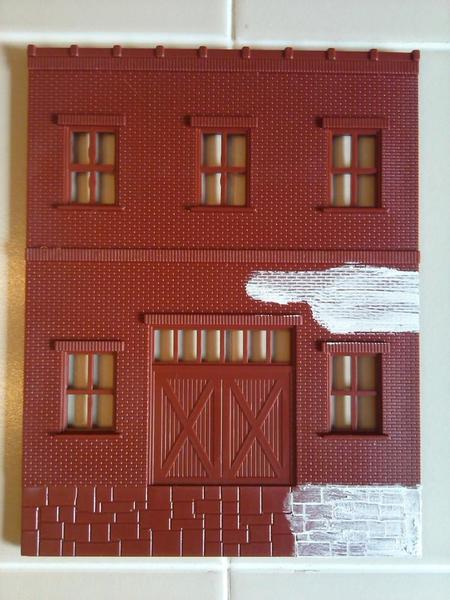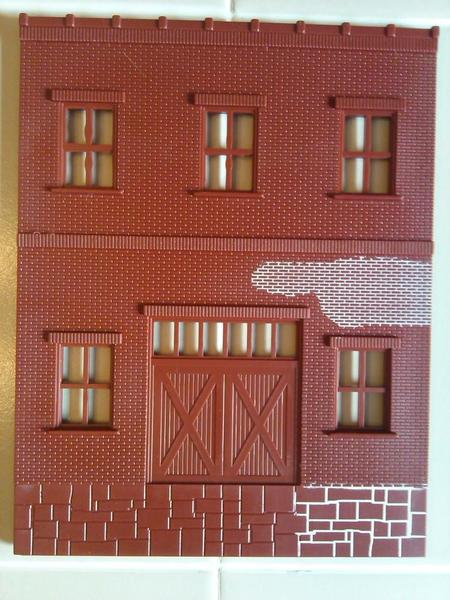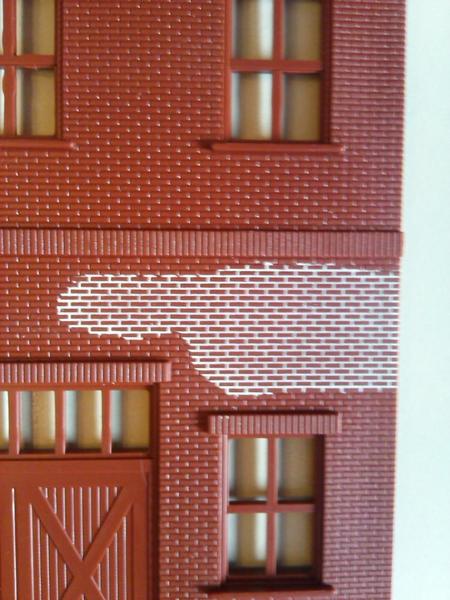All of the above suggestions are good. Practice is, perhaps, the best suggestion of all. Ameri-Towne sells an all-brick wall...e.g., #712...that's a good practice piece.
A couple additional thoughts from 'The School of Hard Knocks'...
The walls are not resin cast; they're injection molded. Nonetheless, they can have some oils, dirt, residue, etc., on the surface for which a good detergent washing/rinsing/drying can be of help before any finishing.
Then, I always paint...rattle cans of enamel work well...the walls a basic brick color of choice before doing any mortar washes. It may seem counter-intuitive, but I favor a semi- to gloss paint, if it's in a color I like. If it has to be a flat paint, then I'll follow up with a clear gloss coat.
The reason I favor a glossy surface is because I've found that the mortar washes....Roberts or thinned acrylic with a drop of detergent...will settle into the mortar grooves more easily, and provide an easier brick surface to wipe the excess from. Besides, subsequent washes to age the surface will deaden the gloss, and there's always a final spray coat of matte or flat clear finish to unify it all and kill any residual shine.
I know some use spackle, others use chalks. I haven't tried them........yet. But I'm impressed with the results of those that do. Someday I'll give them a try.
.....Which really sez TEHO. Practice. Find a technique that's comfortable with you. Stick with it. Practice more variations on your test wall......which you can always wash/strip clean and re-use!.
Of course, there are building kits from other manufacturers that use materials other than plastic; Laser-cut wood/MDF from Laser-Art (Branchline) and River Leaf, and cast plaster from Downtown Deco, for example. These have some unique characteristics for finishing, often covered in the kit instructions with good suggestions/results.
FWIW, always....
KD








